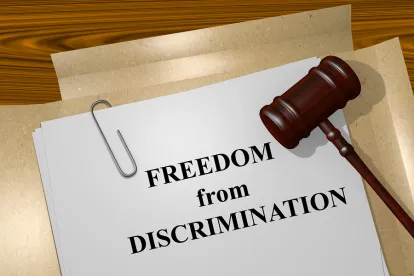A recent federal court of appeals case sheds new light on the question of who should be considered a “similarly situated employee” as compared to the plaintiff in an employment discrimination case.
The context in which “similarly situated employee” analysis arises is that, as the U.S. Court of Appeals for the 11th Circuit found, discrimination is often framed as “the act of ‘treating like cases differently.'” The question then becomes how similar must two employees be to be considered “like cases”? Put another way, how does the court ensure it is comparing apples to apples rather than apples to oranges?
The 11th Circuit’s decision in Lewis
To answer this question, the appellate court summed up the issue presented as:
Faced with a defendant’s motion for summary judgment, a plaintiff asserting an intentional-discrimination claim under Title VII of the Civil Rights Act of 1964, the Equal Protection Clause, or 42 U.S.C. § 1981 must make a sufficient factual showing to permit a reasonable jury to rule in her favor. She can do so in a variety of ways, one of which is by navigating the now-familiar three-part burden-shifting framework established by the Supreme Court in McDonnell Douglas Corp. v. Green, 411 U.S. 792 (1973). Under that framework, the plaintiff bears the initial burden of establishing a prima facie case of discrimination by proving, among other things, that she was treated differently from another “similarly situated” individual―in court-speak, a “comparator.” Texas Dep’t of Cmty. Affairs v. Burdine, 450 U.S. 248, 258–59 (1981) (citing McDonnell Douglas, 411 U.S. at 804). The obvious question: Just how “similarly situated” must a plaintiff and her comparator(s) be?
Lewis v. City of Union City, Georgia, et al., No: 15-11362, (11th Cir. Mar. 21, 2019).
Courts around the country have defined “similarly situated” in differing ways. Thus, the precise definition of who is a similarly situated employee varies depending on the specific legal claim and in which federal court you file your case. Generally, however, a court will look to whether you have identified another employee who has some or all of these characteristics:
- shares the same supervisor as you;
- is subject to the the same employment policies or rules as you;
- performs very similar job tasks and responsibilities (both the number and weight) as you;
- has similar job performance evaluations and disciplinary history; and
- approximately the same experience level (including supervisory experience) as you
Most courts do not require an exact match on these criteria, but the more similar you are to the other person, the more likely a court will deem them a “similarly situated employee.”
In the recent Lewis decision, the 11th Circuit Court of Appeals acknowledged that its prior decisions on the definition of “similarly situated” had been confusing, at best. Ultimately, however:
the 11th Circuit rejected the idea that the similarly situated employee (also called a comparator) must be “nearly identical” and instead held that a comparator must be “similarly situated in all material respects.”
The 11th Circuit also decided that the analysis of whether comparators exist should be conducted in the initial (prima facie) stage of the case, rather than at the final (pretext) stage.
In the Lewis case, the 11th Circuit determined that the plaintiff’s comparators were not “similarly situated in all material respects.” Some of the factors in this decision were that:
- the plaintiff and her comparators were placed on leave years apart and under different personnel policies;
- plaintiff was placed on leave because she had been on unapproved leave while her comparators failed their physical fitness test;
- the plaintiff had not been cleared to return to duty, whereas her comparators theoretically could have returned to duty
It may not always be required to identify a “similarly situated employee,” but it certainly helps
Not all federal courts require a plaintiff in an employment discrimination case to identify a similarly situated employee. “Although appellant certainly could have offered evidence of ‘similarly situated’ employees in support of her claim, she was not required to offer such evidence in order to make out a prima facie case.” Wiley v. Glassman, 511 F.3d 151, 156 (D.C. Cir. 2007); Bryant v. Aiken Reg. Med. Ctr., 333 F.3d 536, 546 (4th Cir. 2003) (“However helpful a showing of a white comparator may be to proving a discrimination claim, it is not a necessary element of such a claim.”).
Of course, even though it may not be required to show a similarly situated employee who the company treated better, it is almost always more helpful to your case if you can make and prove this comparison.
Identify “similarly situated employees” as early as possible
The earlier you can point to “similarly situated employees” during the litigation of your case, the better. That way, your attorney can find out as much information as possible during the discovery phase, in which you and your employer are required to exchange relevant information related to your case.
Given that you will want to show the court that these other employees were very similar to you (job-wise) in most respects, it is vital to obtain as much evidence as possible that establishes this employment likeness. Your attorney may help you uncover this evidence using interrogatories, requests for production of documents, requests for admission, depositions, and other discovery methods.


 />i
/>i
